Tuesday 23 April 2.00 pm

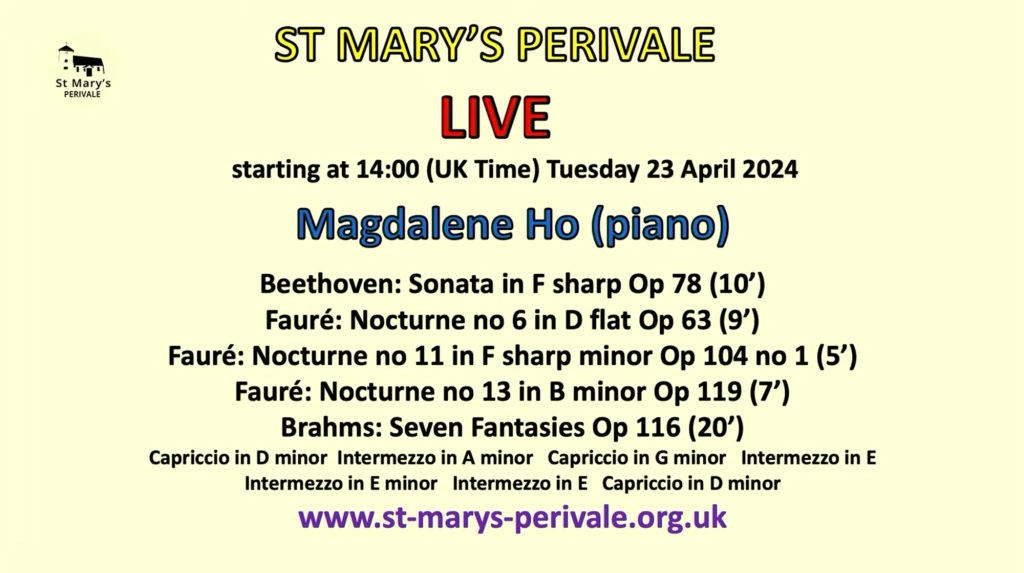
It was from the very first notes that Magdalene Ho drew us in to her secret world with the simple beauty of the opening of the Sonata that Beethoven was to write only four years after the tempestuous ‘Appassionata’ Sonata. During this time he had composed one masterpiece after another: the fourth, fifth and sixth symphonies; the fourth and fifth piano concertos; the violin concerto; the Razumovsky string quartets; and the triple concerto. It was as though Beethoven’s deafness and the invasion of Vienna had opened a secret door to the paradise that surely must exist and was to express itself so poignantly in the final trilogy a few years later.

It was a secret world that Magdalene had found the key to as she immersed herself in sounds that enveloped all she did in this short but very intense recital.Almost not wishing to acknowledge the applause after each piece as she was intent on creating an intimate and deep contemplation where there was just her and the music,nothing else existed.The Beethoven Sonata was played with scrupulous attention to the composers very precise instructions.Rests that became as poignant as the meaning she gave to the beautifully shaped phrases.There was a richness to the chords too which contrasted so well with Beethoven’s continuous questions and answers. There was even more luminosity to the melodic line on its return and it with typical Beethovenian impatience that she attacked the ‘Allegro vivace’ that follows. Once again her scrupulous attention to detail and Beethoven’s very precise pedal instructions gave overwhelming authority to this rather capricious movement.The suddenly legato chords of the coda brought a calming spirit to Beethoven’s whimsy and the two beautifully placed chords ‘piano’ and ‘pianissimo’ made Beethoven’s impatience even more of a surprise as with a flourish we were swept away to the final brilliance of the ending.
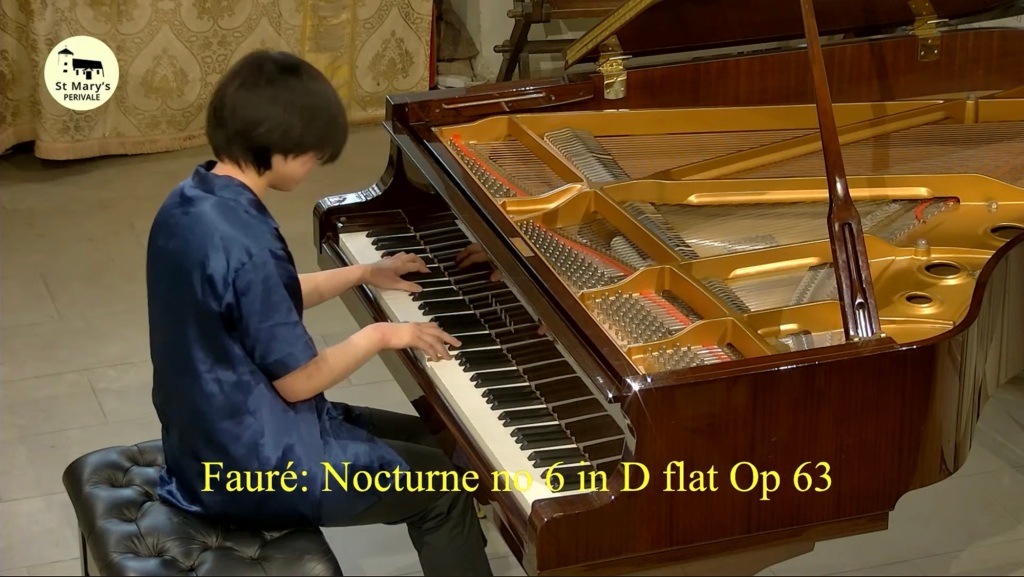
There was a poignant beauty to the Fauré 6th Nocturne where Magdalene’s superb sense of balance allowed the melodic line to be sustained by the extraordinarily rich bass harmonies.There was a fluidity and luminosity of searing intensity and a maturity way beyond Magdalene’s twenty years.The syncopated episode was indeed ‘molto moderato’ and although I am used to hearing it more ‘Allegretto’ ,in her poetic hands it was so full of deeply felt meaning that it was totally convincing as the tenor voice conversed with the melodic line. There was ravishing beauty as waves of sound allowed a melodic line of wistful beauty to shine unimpeded as it gradually built to the mighty entry of the bass which was breathtaking for its extraordinary depth of sound. This was a tone poem and a sound world that Magdalene understood and conveyed with conviction and a mature sense of fantasy that was truly hypnotic.The 8th Nocturne almost a ‘ pas sur la neige’ with its melodic line of bare essentials was of extraordinary poignancy and depth.It was played with a superb sense of line and balance with a truly haunting ending leading without a break into Fauré’s last great masterpiece for piano ,the Nocturne n.13 in B minor.
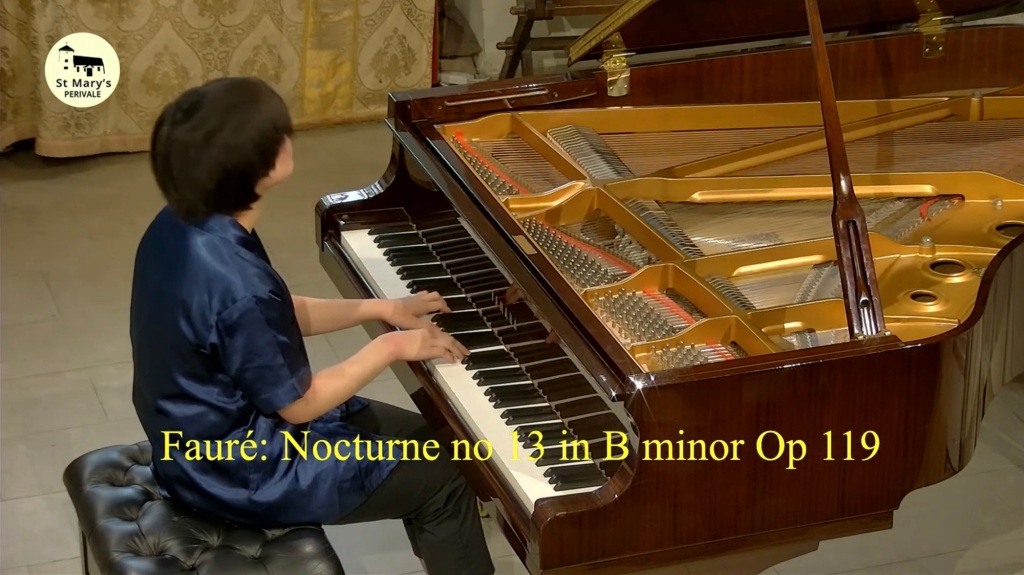
A sound world not easy to infiltrate but it is inspiring that this young musician should play it with real mastery and understanding in the composers centenary year.It is a unique world of contrapuntal intensity with sudden rays of light and streams of melodic outpourings of passionate intensity.Magdalene has a wonderful sense of legato where there is a seemless mellifluousness of richly desolate counterpoints and jets of jeux perlé that seem to flow from her fingers like water from a spring.
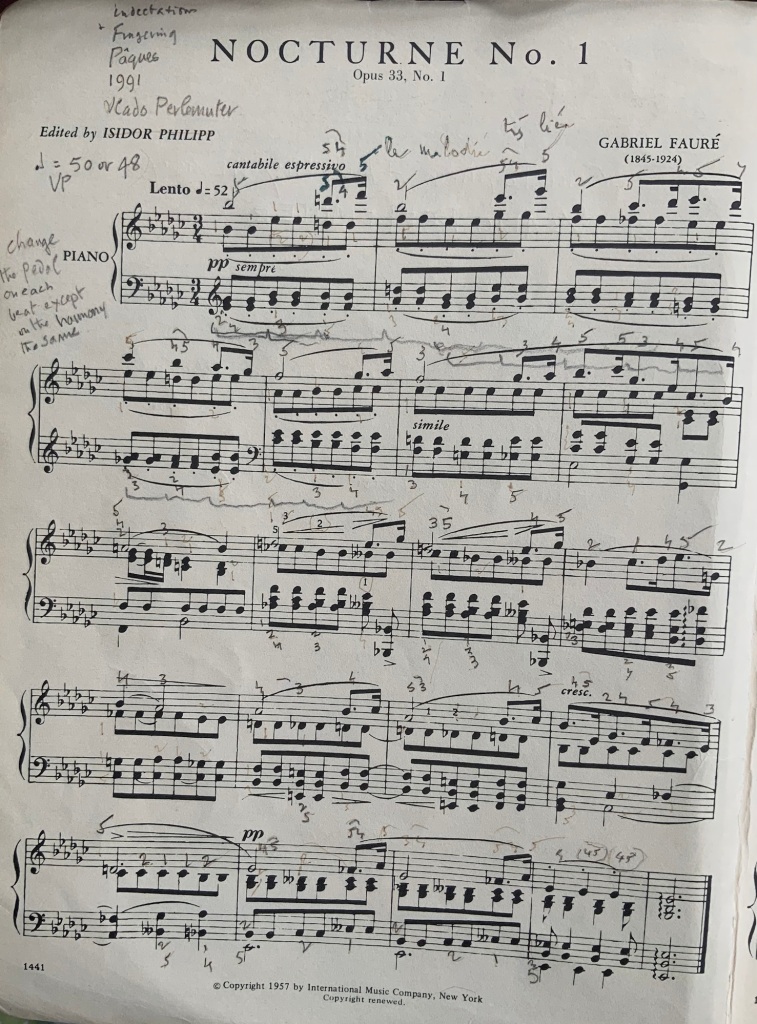
I was brought up with Perlemuter’s performances of Fauré. He insisted that I tell the public in a recital in Rome that the nocturnes by Fauré that he was playing were those that Fauré ,the Director of the Paris Conservatoire,in whose house he was living ,were sent down to him to try out with the ink still wet on the page.Perlemuter could not abide any sickly rubato or weak fussy playing as was so often the case with the so called Chopin tradition still rampant.He, like Magdalene today presented a Fauré of aristocratic nobility and originality where the sentiments are deeply imbedded within the notes and not just applied on the surface!
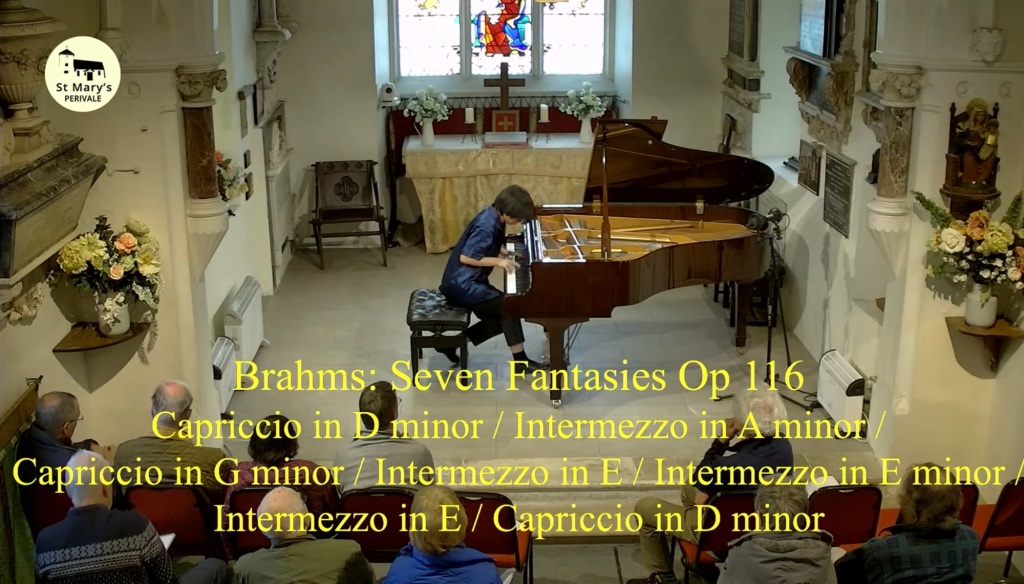
In Brahms she brought a burning intensity to the opening Capriccio with a technical mastery and an extraordinary self identification that created and electric energy driving her forward with ever more intensity.There was the pleading of the Intermezzo in A minor with its simple heart rending beauty etched in golden sounds of wondrous purity where cascades of barely whispered sounds just illuminated this wondrous landscape.The Capriccio in G minor followed with its continuous stream of notes at boiling pitch and its sumptuous central episode of sounds of orchestral richness.A disarming simplicity to the questioning and answering of the Intermezzo in E was reconciled with radiance and a kaleidoscope of sounds of glittering beauty like jewels falling from on high to some magic landscape.There was a ghostly apparition of whispered driven gasps in the intermezzo in E minor evolving to a driving intensity as the sombre beauty of the Intermezzo in E brought the sumptuous beauty of a tenor voice answered by gently majestic chords .Blossoming into radiance with long sumptuous melodic lines passing from tenor to soprano before the clouds appeared once again.Springing to life with the final Capriccio in D minor of great romantic sweep played with superb clarity and dynamic technical mastery.
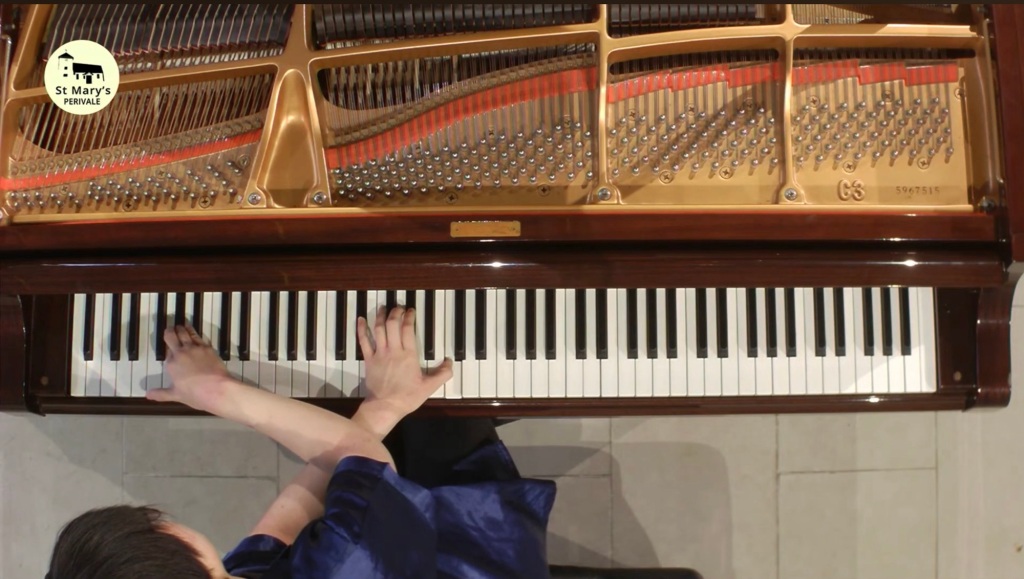
A wonderful recital where Magdalene’s searing intensity and passionate commitment were shared with an audience who were kept spellbound by her genial delving into a magic world of sounds.
It was the fourteenth dance from ‘Davidsbundlertanze’ by Schumann, played as an encore,that relieved the tension and concentration with a performance of beauty and simplicity which created the magic that only a true poet of the piano could ever aspire to.
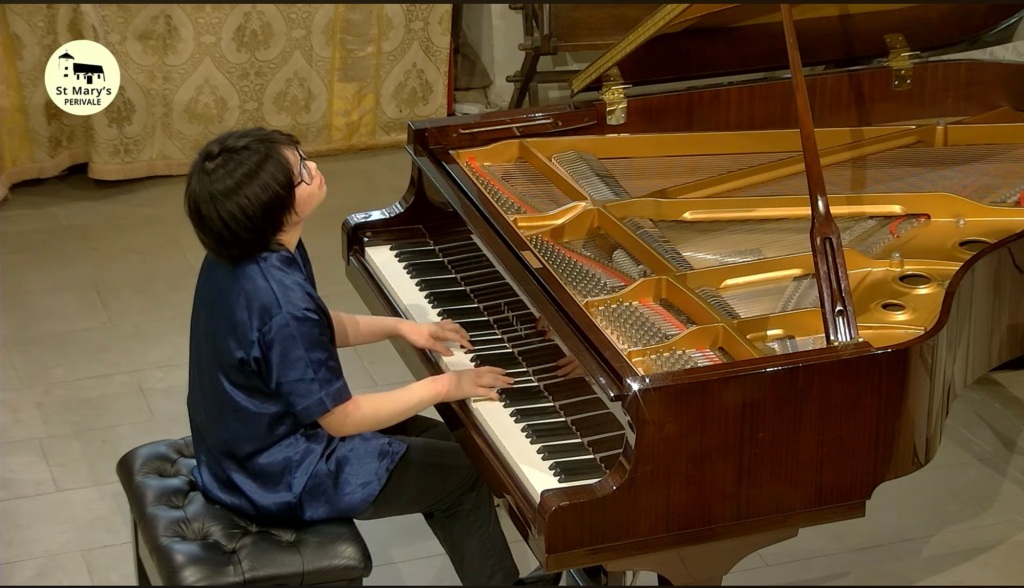
Malaysian pianist Magdalene Ho was born in 2003 and started learning the piano at the age of four. In 2013, she began studying in the UK with Patsy Toh, at the Purcell School. In 2015, she received the ABRSM Sheila Mossman Prize and Silver Award. As part of a prize won at the PIANALE piano festival in Fulda, Germany, she released an album of Bach and Messiaen works in 2019. She was a finalist at the Düsseldorf Schumann Competition 2023 and was awarded the Joan Chissell Schumann Prize for Piano at the Royal College of Music a few months later. In September 2023, she won the Clara Haskil International Piano Competition in Vevey along with receiving the Audience Prize, Young Critics’ Prize and Children’s Corner Prize. She has been studying with Dmitri Alexeev at the Royal College of Music since September 2022, where she is a Dasha Shenkman Scholar supported by the Gordon Calway Stone Scholarship, and by the Weir Award via the Keyboard Charitable Trust. She recently won the Chappell Gold Medal at the RCM

12 May 1845, Pamiers ,France – 4 November 1924 ,Paris
Fauré’s major sets of piano works are thirteen nocturnes , thirteen barcarolles , six impromptus , and four valses-caprices. These sets were composed during several decades in his long career, and display the change in his style from uncomplicated youthful charm to a final enigmatic, but sometimes fiery introspection, by way of a turbulent period in his middle years. His other notable piano pieces, including shorter works, or collections composed or published as a set, are Romances sans paroles, Ballade in F♯ major, Mazurka in B♭ major, Thème et variations in C♯ minor, and Huit pièces brèves. For piano duet, Fauré composed the Dolly Suite and, together with his friend and former pupil André Messager , an exuberant parody of Wagner in the short suite Souvenirs de Bayreuth.Fauré’s stylistic evolution can be observed in his works for piano from the elegant and captivating first pieces, which made the composer famous and show the influence of Chopin, Saint-Saëns, and Liszt. The lyricism and complexity of his style in the 1890s are evident in the Nocturnes nos. 6 and 7, the Barcarolle no. 5 and the Thème et variations. Finally, the unadorned ,essential style of the final period of the last nocturnes (nos.10–13), the series of great barcarolles (nos. 8–11) and the astonishing Impromptu no. 5. Fauré scholars are generally agreed that the last nocturne n. 13 in B minor – which was the last work he wrote for the piano – is among the greatest of the set. Nectoux writes that along with the sixth, it is “incontestably the most moving and inspired of the series.”Bricard calls it “the most inspired and beautiful in the series.”For Pinkas, the work “achieves a perfect equilibrium between late-style simplicity and full-textured passionate expression.”The work opens in a “pure, almost rarefied atmosphere” (Nectoux), with a “tone of noble, gentle supplication … imposing gravity and … rich expressive four part writing.”This is followed by an allegro, “a true middle section in a virtuoso manner, ending in a bang” (Pinkas).The repeat of the opening section completes the work.The eleventh nocturne was written in memory of Noémi Lalo; her widower, Pierre Lalo , was a music critic and a friend and supporter of Fauré and its funereal effect of tolling bells may also reflect the composer’s own state of anguish, with deafness encroaching.The melodic line is simple and restrained, and except for a passionate section near the end is generally quiet and elegiac.The sixth nocturne, dedicated to Eugène d’Eichthal, is widely held to be one of the finest of the series. Cortot said, “There are few pages in all music comparable to these.” It is among the most rich and eloquent of all Fauré’s piano works and one of the most passionate and moving works in piano literature. Fauré wrote it after a six-year break from composing for the piano.Copland wrote that it was with this work that Fauré first fully emerged from the shadow of Chopin,

Johannes Brahms presumably wrote the Fantasies op. 116 at the same time as the Intermezzi op. 117 in the summer of 1892 in Bad Ischl. His sojourn in the Salzkammergut obviously inspired Brahms to write music for solo piano, as a year later he worked on other cycles when he was there. Amongst these late melancholy piano pieces, op. 116 is in particular characterised by opposites. Four “dreamy” intermezzi according to Clara Schumann are juxtaposed with three “deeply passionate” capricci.
After an early focus on works for solo piano, including the three sonatas that Robert Schumann described as “veiled symphonies,” Brahms tended to employ his chosen instrument, the piano, in collaborative works, producing a variety of duo sonatas (with violin, cello, and clarinet), piano trios, piano quartets, and one piano quintet, as well as two more trios (one with horn and one with clarinet). His final efforts for solo keyboard were published in four sets of shorter works (Opp. 116-119), which appeared between 1891 and 1893.
These four sets of late solo piano pieces are all in effect abstract instrumental songs, though unfailingly idiomatic. (So much so, that he abandoned his attempt to orchestrate the immediately popular Intermezzo, Op. 117, No. 1.) All are in the A-B-A song form typical of character pieces and are as highly concentrated as his greatest songs.
Only the first of these groups (Op. 116) has a continuity that argues for continuous performance. The probable dedicatee of these works, Clara Schumann , with whom Brahms had a rather complicated relationship, praised them as “a true source of enjoyment, everything, poetry, passion, rapture, intimacy, full of the most marvellous effects”.

17 December 1770. 26 March 1827 (aged 56). Vienna
The Piano Sonata No. 24 Op. 78, nicknamed “à Thérèse” (because it was written for Countess Thérèse von Brunswick was written in 1809.
The second movement is a variation to the ending of the popular patriots song “Rule Brittania!”
According to Carl Czerny, Beethoven himself singled out this sonata and the “Appassionata “ as favourites together with the later ‘Hammerklavier”. After a pause of four years, Beethoven returned to the piano sonata genre in 1809. Unlike its predecessor, the f-minor Sonata op. 57 (the “Appassionata”), this work strikes a new and lyrically cantabile tone that must have been the reason for its tradition-breaking two-movement structure; a slow middle movement would not have provided the necessary contrast to the outer ones. Just as unusual as the general character of opus 78 is its four bar Adagio introduction; this does not directly refer to the subsequent motifs and themes, and serves no other purpose than to “conjure up the atmosphere of the entire sonata in our hearts” (Hugo Riemann).


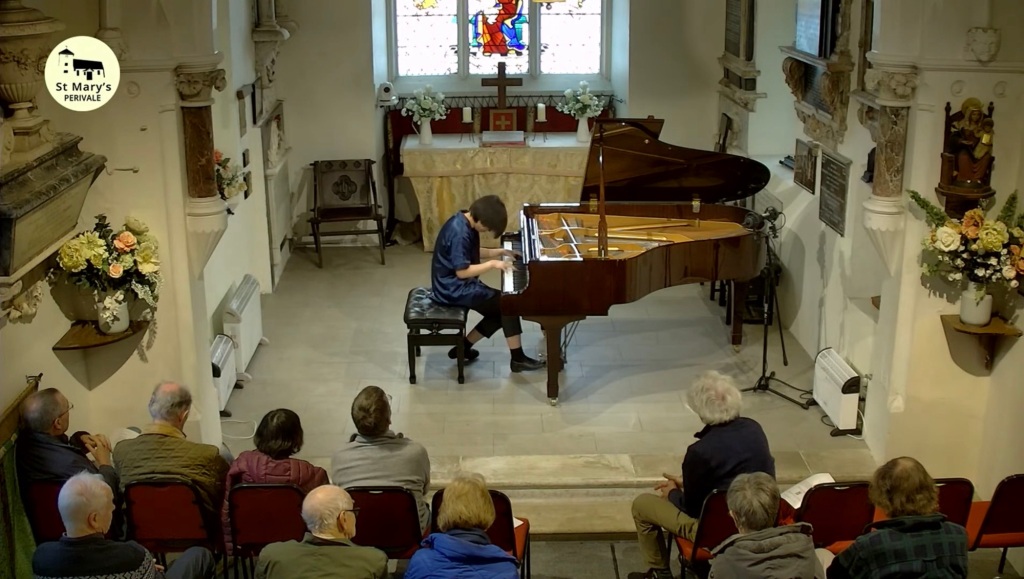

Una risposta a "Magdalene Ho at St Mary’s A magic world of genial whispered secrets"